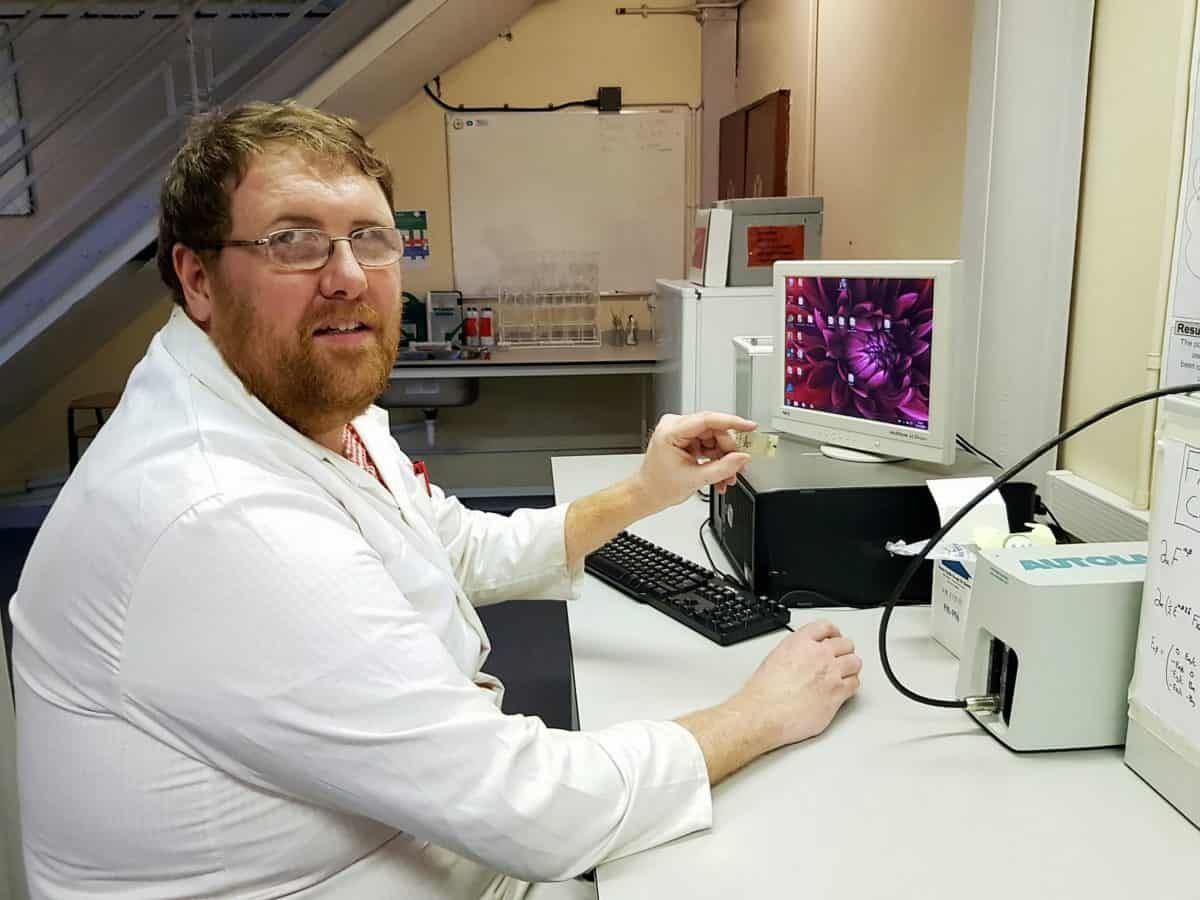
Researchers have developed a new rapid test for earlier diagnosis of sepsis and results from it can come in as quickly as two-and-a-half-minutes.
The test, developed by researchers at the University of Strathclyde, uses a biosensor device to analyse the patient’s blood.
Results of the blood test can come in as quickly as two-and-a-half minutes, compared to existing hospital tests, which can take up to 72 hours to process.
Researcher Dr Damion Corrigan, who helped develop the device, said it could save lives.
Dr Corrigan said: “With sepsis, the timing is key.
“For every hour that you delay the antibiotic treatment, the likelihood of death increases.
“At the moment the 72-hour blood test is a very labour intensive process but the type of test we envisage could be at the bedside and involve doctors or nurses being able to monitor levels of sepsis biomarkers for themselves.
“If GP surgeries had access they could also do quick tests which could potentially save lives.”
He added: “It could also be available in A&E departments so that anyone coming in with a question mark could be quickly ruled in or out.
“I would hope the test could improve survival rates by ensuring people get treatment more quickly.
“It’s not just saving lives, a lot of people who survive sepsis suffer life-changing effects, including limb loss, kidney failure and post-traumatic stress disorder.
“The test could stop a lot of suffering.”
The device takes a pinprick of blood which is then put on the chip for the result to be read.
It’s needle shape means it can also be implanted and used on patients in intensive care.
Sepsis develops when the chemicals the immune system releases into the bloodstream to fight an infection instead cause inflammation throughout the entire body.
The infection causes the body’s immune system to attack the body’s own organs and without quick treatment, it can lead to multiple organ failure and death.
It can be hard to diagnose sepsis as it can initially look like flu, gastroenteritis or a chest infection.
The new low-cost test uses a biosensor device to see whether the protein biomarker interleukin-6 (IL-6) is present in the bloodstream, with high levels indicating sepsis.
IL6 is an endogenous chemical which is active in inflammation.
Dr Corrigan said IL-6 is one of the best markers of sepsis.
He added: “The research shows that the tools we’ve developed could underpin a rapid test for sepsis.
“We’ve developed a needle-shaped sensor with different electrodes and have shown we can detect one sepsis biomarker in almost real time, at the clinically relevant levels.
“When levels go up, as they do in sepsis, we can detect that too.
“Sepsis is quite complex and difficult to diagnose but IL-6 is one of the best markers.
“Our research so far shows you can measure a single sepsis marker, but there are actually eight sensors on the needle, each about the same diameter as a human hair and the idea is that in the future we can get multiple markers on the one microchip for a more comprehensive test.”
The UK Sepsis Trust estimates that around 52,000 people in the UK die every year and six million globally from the condition.
By Arthur Vundla